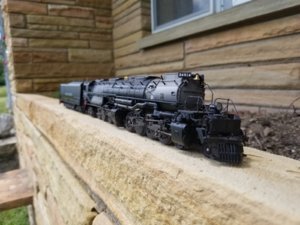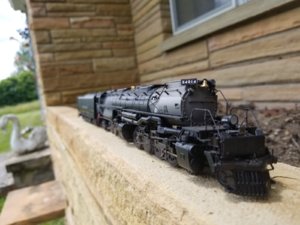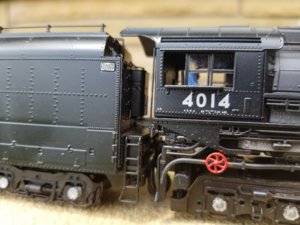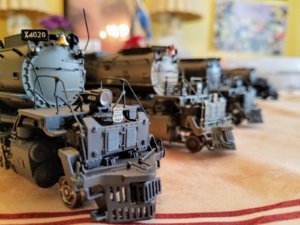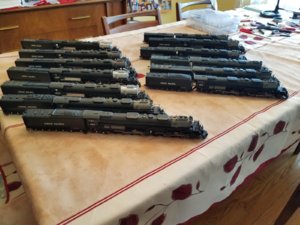Yup, got my terms muddled...thanks for correcting me. The compound cylinders got direct hp steam at start-up, and the booster was manually engaged when the lp cylinders needed to be adjusted so that they produced as much power as the hp cylinders. What I had intended to convey was that the simple steam admission was cut off when using it to lift a drag before about 15 mph.
However, I have read several accounts and read posts by knowledgeable people that the Y6b was an unsettling platform at speeds much above 40 mph. It stands to reason that the N&W built and used the Class A because they wanted something with power and speed, and not what the Y Class was meant for...drags. Or, to say it differently, what was the point of the Class A in the first place? Why run two classes of locomotives when one would suffice?
Here is a quote from a forum thread elsewhere where the member 'overmod' , an expert on steam, offers a comment on the subject of the Y Class:
"
Compounds are designed so that, ideally, the torque produced by the HP engine and that produced by the LP engine are either roughly equal or proportional to the relative adhesion limits of the two engines. In practice, effects such as heat loss result in the LP engine developing substantially less than expected. The booster valve 'boosts' the power of the LP engine by adding an amount of live steam that brings the average pressure at either the receiver or the LP steam chests up to 'spec' -- or, if a bit more power is desired, beyond that... but not up to the 'full pressure' used when the conventional simpling valve is used.
As noted, the way the N&W had this set up, the power from the forward (LP) engine was higher enough that a bit of ballasting could provide a higher effective TE
at the speeds where the booster was found most effective (IIRC from Rails Remembered vol 3 this was around 26mph).
Another way, in principle, that the 'boosting' can be done is to modulate steam into the LP chests more directly, so that not only the average pressure but the developed torque relative to stroke are similar between the HP and LP engines. This (in theory) allows the LP engine to be balanced accurately, and the engine to work compound to a higher speed. While it might be uneconomical to work even an 'improved' Y6b as fast as 40-45 mph (assuming you could get it that fast without bad riding), a modulated-admission locomotive -- with, perhaps, the slight additional improvements of having its forward engine hinged only in the horizontal plane, as the Alco Challengers were famously built (and, before them, the class A, although not nearly enough has been made about that point...) and being given better leading and trailing trucks (the class A's arrangement would probably do) -- could be made to run as fast as the steam mass flow from the boiler would permit. In my opinion, it would certainly have been practical to run such a locomotive at typical N&W fast-freight speeds on the flat, greatly expanding the range of the Y class (and incidentally taking advantage of the relatively high weight on drivers and short length for developed power of the 2-8-8-2 wheel arrangement.
[To an extent, of course, the external 'booster' valve would permit much of the same effect, and I personally suspect that any Ys which were actually run to high speed would have been 'improved' locomotives run by men who understood precisely how to use the improvement.]"
Again, thanks for drawing my error about the term 'booster' to my attention.



